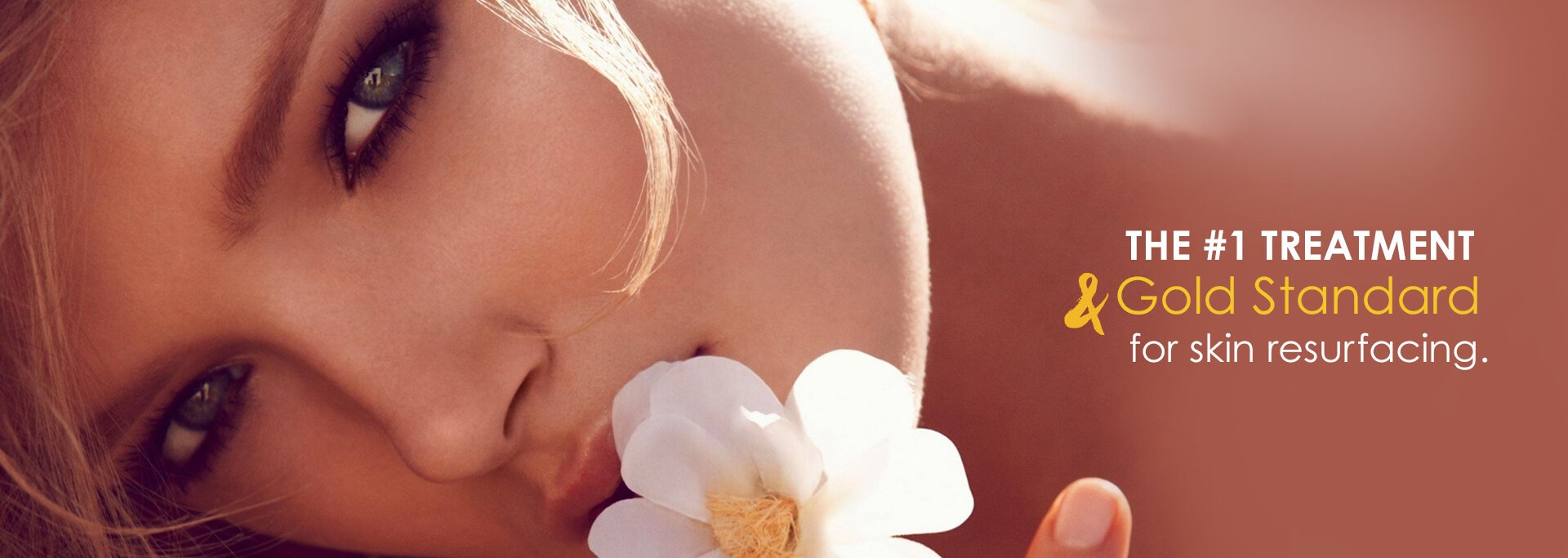
Call our Miami location at (305) 340-9002 to schedule your consultation.
Fractionated CO2 laser skin resurfacing is a skin rejuvenating procedure used to treat a variety of blemishes on the face and neck. This laser reduces the look of fine lines as well as acne and other scars and discoloration of the skin. But how exactly does it work?
What is Fractionated CO2 Laser Skin Resurfacing?
Fractional C02 is the #1 treatment and Gold Standard for skin resurfacing. Erase years off your face with this treatment resulting in better and even skin tone, smoother skin, removal of sun damage and age spots, pore reduction, skin tightening, reduction in wrinkles, improvement in the appearance of scars, and indentations, as well as overall plumping of the face!
The CO2 (carbon dioxide) laser removes layers of skin in a fractionated pattern similar to a chemical peel but using a laser instead of chemicals. The term fractionated describes the way the CO2 laser ablates skin cells and means the layers of the skin are removed in a column pattern that leaves the surrounding skin intact. This promotes skin regeneration and speeds up the healing process.
The CO2RE versatile fractional system is an outpatient procedure for many skin types that precisely targets and effectively treats the skin’s surface, middle, and deep dermal levels. By targeting water molecules in the human cells, heating tissue, and creating microscopically-controlled thermal damage, it forces your own body to produce new collagen and elastin without damaging your epidermal layer. Any acne scars or indentations will be filled in with the new collagen that your body will produce within the course of the next 6 months post-treatment.
Is CO2 Skin Resurfacing Right for Me?
Some skin types are more suited for the CO2 laser than others. For example, someone who is fair skinned, with sun damage and visible acne scars would make a good candidate as would someone with light skin who would like to get rid of the fine lines that make them look older.
But if you have darker or olive-toned skin, the CO2 laser may not be an ideal procedure for you. This is because as darker skin tones heal, hyperpigmentation may occur as part of the process. In fact, this happens about 30 percent of the time on those with darker pigment, and it tends to occur in patches. While this hyperpigmentation can be treated, it can require further topical ointments to treat the pigmentation and can take several months to resolve.
Other people who would not be ideal candidates would include pregnant women, those who have used Accutane (isotretinoin) to treat acne in the past six months or have a history of herpes infections or cold sores. People who have used Accutane or have had cold sores can be treated, but precautions will need to be taken to prevent complications after the procedure.
It is best to schedule a consultation to determine what skin resurfacing treatment is appropriate for your skin type. Although CO2 may not be ideal for everyone, YAG, Resolve, and sublative are other options that are optimal for resurfacing darker skin types.

The effects of the procedure continue to work up to 6 months depending on the size of treatment area. You can expect the procedure to take up to two hours depending on treatment area(s). Most cases only require one treatment to achieve the desired results; some require 2 or 3 treatments for additional improvement with deep wrinkles or scars.
Moderate discomfort during the treatment is expected, so you can discuss your tolerance level with the physician before treatment. A topical numbing cream is typically applied and pain relievers can be prescribed to alleviate discomfort. Your physician may also recommend antibiotics or antiviral prophylactic to minimize any risk of infection.
The first few days post-treatment you can expect redness as if sunburned with swelling, and new skin will appear up to a week later. For more aggressive treatments or a weakened immune system, the healing process can be prolonged a few days. Results will vary depending on age, sun exposure, immune system, and lifestyle choices.
Fractionated CO2 Laser Skin Resurfacing in Miami
Dr. Arviv provides the best laser skin resurfacing in Miami with her vast experience treating skin conditions including the removal of moles and lesions as well as the use of advanced injectables like Kybella. Treat yourself to beautiful skin from Arviv Medical Aesthetics in Miami.
Contact Arviv Medical Aesthetics today to schedule an appointment.

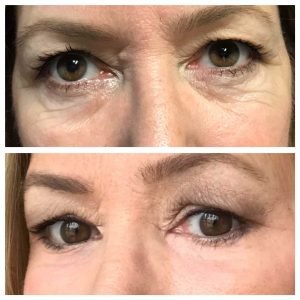
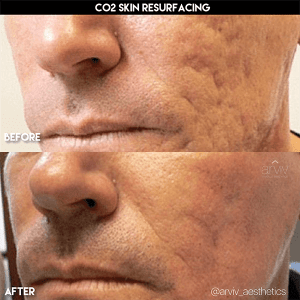
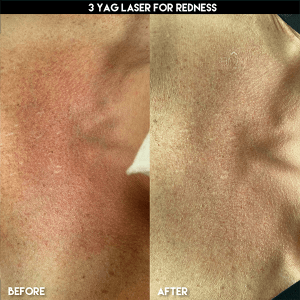
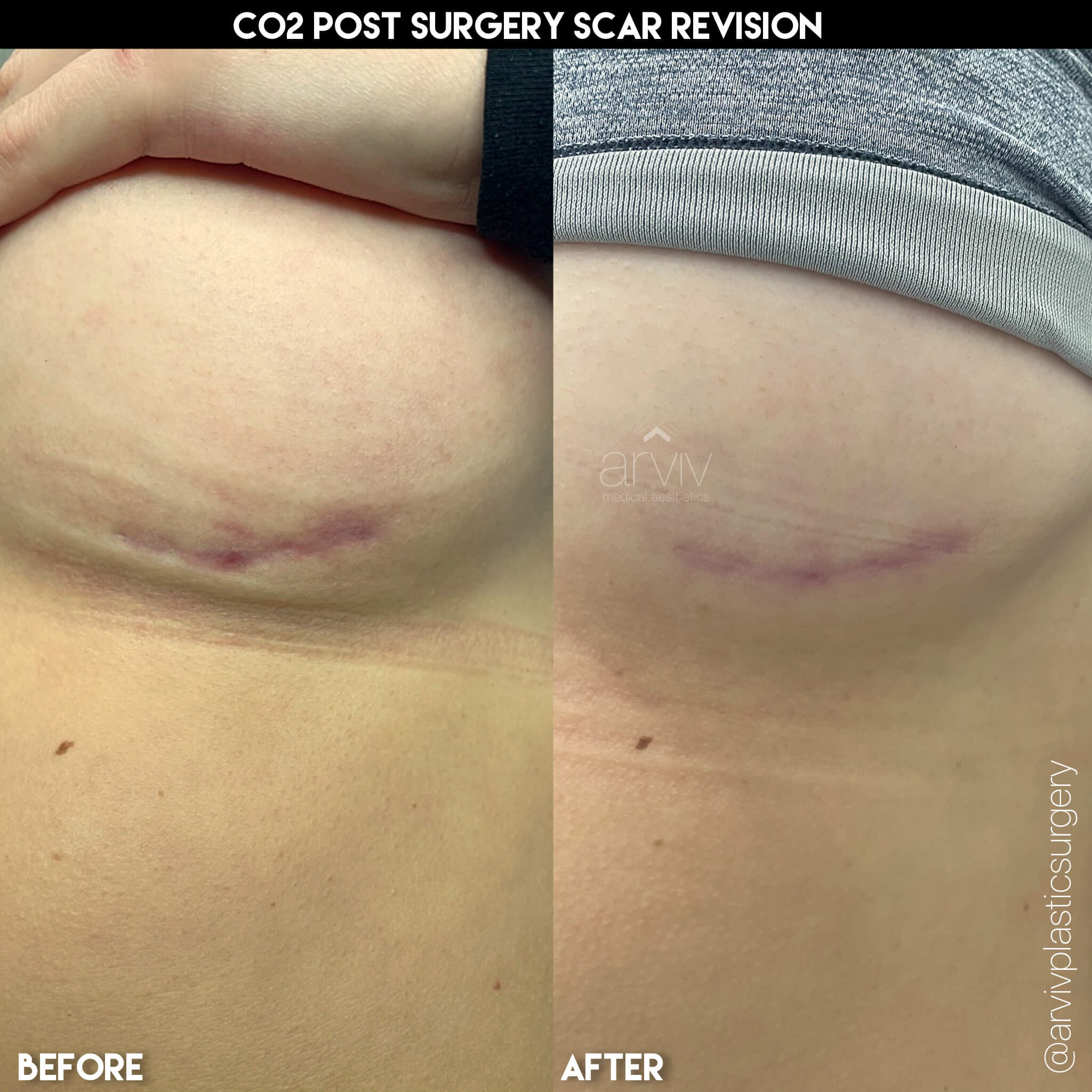
SKIN RESURFACING INSTRUCTIONS
PRE-TREATMENT INSTRUCTIONS
- Starting 1 to 2 weeks prior to treatment, increase water intake to 6-8 glasses per day.
- Avoid the sun 4-6 weeks before treatment.
- Your provider may ask you to stop any topical medications or skin care products 3-5 days prior to treatment.
- If you have had a history of perioral herpes simplex virus, your provider may recommend prophylactic antiviral therapy when treating that area. Follow the directions for your particular medication.
- If you are tanned or have a darker skin type, a bleaching regimen may be started 4-6 weeks before treatment.
- RECENTLY TANNED SKIN CANNOT BE TREATED! If treated within 2 weeks of active (natural sunlight or tanning booth) tanning, you may develop hypopigmentation (white spots) and this may not clear for 2-3 months or more.
- The use of self-tanning skin care products must be discontinued one week before treatment. Any residual self-tanner must be removed prior to treatment.
- You MUST avoid bleaching, plucking or waxing hair for 4-6 weeks prior to treatment. The melanin-containing hair must be present in the follicle as it is the “target” for the laser light.
POST-TREATMENT INSTRUCTIONS
- The treatment area should be cared for delicately until healing is complete. Care should be taken to prevent additional trauma to the treated area for the first 4 to 7 days following treatment.
- Post treatment moist wound healing with soaks and topical ointment (i.e., Aquaphor or A&D ointment) is recommended for at least 3 days and up to 7-10 days in some circumstances.
- Use simple soap cleansers without exfoliators or beads. (i.e., Dial) followed by a moisturizer.
- Edema WILL occur and peak at 2-3 days typically.
- Avoid the sun 4-6 weeks after treatment until your physician allows it.
- Use Sunblock (> 30 SPF) on a regular basis and wear a hat to protect your skin.
- Avoid use of makeup during the first 5 days post-treatment. Once the skin heals, you can apply oil-free makeup to minimize redness, which usually fades in 2 to 3 months.
- Following treatment, excessive perspiration to the treated area may cause tissue disruption. Physical exercise (aerobics, yard work, sports activities) should be discontinued for 7 days to reduce the risk of infection and discomfort.
- Avoid scratching or peeling any scabs to minimize any scarring and preventing any infection.
- We recommend using fresh pillowcases and sheets during your 1st week of downtime.
- Healing should take 5 to 21 days, depending on the condition that was treated.
- You may experience burning or stinging up to 72 hours after treatment. A fan, ice pack, or cold compresses may help after treatment.
- You may experience itching after treatment. Hydrocortisone cream may help.
- Three to seven days after treatment, your skin should become dry and peel.
-
CO2 – Includes the following:
- Consultation and evaluation
- Medication prescription as needed
- 2-3 hour procedure in office
- Numbing cream and medical supplies
- Post-care skin products
- 1 week post-treatment follow-up
- 1 month post-treatment follow-up
- 4 months post-treatment follow-up
Prices are subject to change and personalized prices will be provided upon consultation.